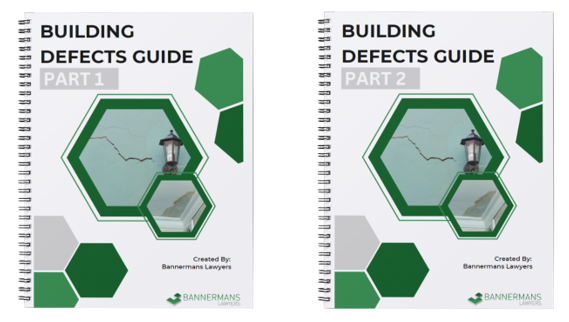Building Defects: Who pays?
Posted 02 December 2024
Category: Building Defects
Design and Building Practitioners Act Compliance Quiz
Find out whether your planned works need to comply with the Design and Building Practitioners Act 2020.
Overview of Building Defects in Strata Complexes
Building defects represent a significant challenge for strata owners in New South Wales, often emerging long after construction is completed. A study found that approximately 85% of strata owners face costly building defects, primarily due to factors such as poor construction practices, non-compliance with regulations, and the use of inferior materials. These defects can adversely affect both the safety and value of properties. Legal protections exist under the Home Building Act 1989, but they do not fully safeguard owners, especially in older buildings. Strata owners must remain vigilant and proactive in identifying and managing potential defects to mitigate long-term risks and costs.
Home Building Act 1989
Legal Protections for Owners
The Home Building Act 1989 aims to protect residential property owners from defective building work by mandating warranties in all contracts for residential building work. Key features include:
- Warranties: These warranties ensure that construction work is performed with due care, skill, and in accordance with specified plans. They are automatically included in contracts, even if not explicitly stated.
- Transferability: Warranties benefit future property owners, including those in strata schemes.
- Duration: Warranties for building defects last between two and six years from the completion date, depending on the type of defect. After this period, recovery rights are forfeited.
- Claims Process: If defects are proven (often requiring expert evidence), builders or developers may find it difficult to defend claims unless they can show the defect arose from a design fault.
- Tribunal Claims: Disputes under the Home Building Act 1989 involving sums less than $500,000 are handled by the NSW Civil and Administrative Tribunal (NCAT), which typically orders rectification rather than monetary damages.
- Builder Insolvency: A significant risk exists that owners may not recover losses if builders or developers become insolvent.
Home Owners Warranty Insurance
To address builder insolvency risks, residential building contracts must include Home Owners Warranty Insurance, which serves as a safety net recovering costs when builders cannot complete work or rectify defects. This insurance is effective only when:
- The builder becomes insolvent, dies, disappears, or has their license suspended due to non-compliance with an NCAT order.
- Owners must promptly notify insurers of defects (even when a claim has not been made); late notifications may lead to denial of coverage.
Strata Schemes of Four or More Storeys
For strata buildings of four or more storeys, Home Owners Warranty Insurance are not required since 2003. However, since January 1, 2018, a Strata Building Bond and Inspection Scheme (SBBIS) has been implemented by NSW Fair Trading. This scheme mandates that developers lodge a bond equivalent to 2% of building costs with NSW Fair Trading. To recover this bond:
- Developers must obtain defect reports from approved consultants within specified timeframes.
- If defects are identified during final inspections, bond funds can be used for rectification costs.
Decennial (ten year) liability insurance (DLI)
In the alternative to the SBBIS, in the last 12 to 18 some developers opted to obtain a decennial (10 year) insurance policy in lieu of the 2% bond scheme. Only a small take has occurred to date as it may be relevant in the medium term for 4 or more storeys buildings.
Design and Building Practitioners Act 2020
The Design and Building Practitioners Act 2020 (NSW) expands potential negligence claims related to building defects. Key aspects include:
- Duty of Care: All parties involved in construction owe a duty of care to avoid causing economic loss due to defects. This duty extends beyond builders to designers and project managers.
- Professional Indemnity Insurance: Many construction professionals carry insurance that can provide financial recourse for successful claims.
- Limitation Period: Owners have six years from when a defect (or defects) becomes first apparent to file claims.
- Retrospective Application: The duty of care applies retroactively to defects identified after 2014 however claims are subject to a 10 year long stop limitation period.
- Exemptions: Certifiers are exempt from this duty under the new legislation, leading owners to consider common law negligence claims against them.
Who Pays? – The Owners Pay!
Ultimately, owners bear the financial burden of rectifying building defects. The legal and insurance frameworks do not offer complete protection; many owners lose recovery rights by failing to act within required timeframes provided under the relevant legislative frameworks.
Proactive Measures for Strata Owners
Strata owners should take several proactive steps to manage potential building defects effectively:
- Obtain Early Legal Advice: Understand warranty expiration dates based on when building work was completed.
- Verify Insurance Coverage: Confirm whether Home Owners Warranty Insurance is in place and identify the insurer.
- Monitor Bond Requirements: Ensure compliance with the Strata Building Bond and Inspection Scheme if applicable.
- Conduct Building Reports: Obtain independent building reports well before warranty expiration—typically six months prior.
- Document Defects: Keep detailed records of reported defects by lot owners, including photographs and repair documentation.
- Communicate with Builders/Developers: Provide defect reports before warranty expiration and demand rectification responses.
- Initiate Legal Proceedings if Necessary: If builders fail to address significant defects before warranties expire, commence legal proceedings promptly to preserve recovery rights.
By following these measures, owners can better navigate the complexities of building defect claims and protect their investments against potential losses. Seeking expert legal advice is crucial whenever uncertainties arise regarding rights or obligations under these frameworks.
Bannermans Contact
For building defects advice or enquiries please contact Bannermans on 02 9929 0226 or at enquiries@bannermans.com.au. Our specialist team of building defect lawyers can help guide owners through the defect rectification process and provide preliminary advice to understand their recovery rights. Before undertaking this process, if the committee have questions regarding their defects or the process involved Bannermans would be happy to offer a 15-minute complimentary consultation with one of our defects experts.
Design and Building Practitioners Act Compliance Quiz
Find out whether your planned works need to comply with the Design and Building Practitioners Act 2020.
Building Defects Advice
Strata committees & lot owners
Related Articles
What if my works are done without planning approval or don’t comply with the Design and Building Practitioners Legislation?
What is a Class 1 and what is a Class 2 Building?
A history of the cases exploring the duty of care under the Design & Building Practitioners Act 2020
A New Duty of Care: Game Changing Protection for Property Owners
No Duty Owed by Certifying Council
The Subcontractors Conundrum: How the D&BPA Empowers Owners Corporations to Pursue Justice
Building Defects: Which Government was responsible for the defects crisis?
Builder gone bust? Making the most of the Home Warranty Insurance?
What’s an easement worth between neighbours?
A Comprehensive Guide to the Design and Building Practitioners Act 2020 – Regulation Update
“Material Facts” – What and When you need to disclose them to a potential purchaser?
Related eBook’s

***The information contained in this article is general information only and not legal advice. The currency, accuracy and completeness of this article (and its contents) should be checked by obtaining independent legal advice before you take any action or otherwise rely upon its contents in any way.

